

From monuments to cemeteries, steeped in history
The Civilian Conservation Corps built the Peoples State Forest Nature Museum in 1935. It was open until 1942, when the CCC was decommissioned. The outside of the Museum, and the fireplace, are made from local fieldstone, some of which was taken from nearby stonewalls. The inside is paneled in American chestnut, which was harvested after it was destroyed by the chestnut blight.
Peoples State Forest Museum
106 East River Rd., Barkhamsted
860-379-2469
Beckley Furnace (also known as “East Canaan #2” during the Barnum and Richardson years, and also known as East Canaan Iron Furnace Industrial Monument) produced pig iron until the winter of 1918-19. Constructed of locally quarried marble, the furnace was originally thirty-two feet in height and thirty feet square at the base. Later, after the Barnum Richardson Company acquired it, the height was raised to forty feet making it one of the largest of forty-three blast furnaces in the Salisbury Iron District.
Beckley Furnace
SE of Canaan on Lower Rd.
860-837-0270
[email protected]
According to the original store ledger, the Colebrook General Store was built and opened for business in 1803 by Martin and Solomon Rockwell. The original store, a one room, one story building, is known today as the Woodbine Cottage. It stands directly behind the Colebrook Store. The need for a larger store to serve the growing population resulted with the Rockwell’s having master builder William Swift construct another building directly in front of the original one in 1812.
559 Colebrook Rd., Colebrook
In the late 19th and early 20th centuries, wealthy New Yorkers established country estates in western Connecticut. One of these was Rock Hall, begun in 1911 for Jerome Alexandre, the heir to a shipping fortune. Alexandre’s architect, Addison Mizner, is best known for luxurious Mediterranean Revival estates in Palm Beach, Florida. For Rock Hall, Mizner employed a simplified version of 16th-century English design, which he called ‘Tudor’ and which reflected the Anglophilia of the American upper class at the time. The exterior is a severe composition of rubble stone and stucco, achieving visual effect from contrasting textures. The interior is more elaborate, and in an eclectic mix of styles—English, French Renaissance, and Georgian—characteristic of Mizner’s work. In the landscape are curving drives, allées of trees, a rustic garden pavilion, and a balustrade terrace, which, before the trees grew up, would have provided scenic views. Rock Hall continued to serve as a summer home until 2007, when it became a bed-and-breakfast.
19 Rock Hall Rd., Colebrook
The Housatonic Railroad was one of the first railroads to exist in the northeast. Goods flowing from the many industries of Litchfield County could then be transported to Bridgeport on Long Island Sound and then taken to New York markets via ferryboat. Construction on the Housatonic Railroad was actually begun in 1837. By February 1840, rails stretched from Bridgeport to New Milford, Connecticut. Almost two years later, in December of 1841, rails reached Canaan. Ten years later, the railroad had reached into Massachusetts and had forged links with the Western Railroad of Massachusetts, later to become the Boston & Albany Railroad.
Cornwall Bridge Railroad Station
Junction of Poppleswamp Rd. and Kent Rd., Cornwall
[email protected]
West Cornwall’s covered bridge is an excellent example of the Town lattice truss, with its red-spruce timbers secured by a pair of treenails (slotted and wedged to hold them in place) at every intersection. For many years it was thought that this bridge was built in 1841 to replace one washed away in the flood of 1837, but recent research by Michael R. Gannett for the Cornwall Historical Society has shown that the correct date is 1864. The center pier supporting the middle of the bridge was probably reused from the earlier structure. One source gives 1887 as the date when a secondary queen-post truss was added, probably to stiffen the bridge, since wooden trusses had a tendency to sag.In 1973 the Connecticut Department of Transportation rehabilitated the bridge by inserting a concealed steel deck to bear the weight of the traffic. The project won the Federal Highway Administration’s outstanding historic preservation award.
West Cornwall Covered Bridge
CT 128 at Housatonic River, Cornwall
Bulls Bridge is one of the few functional covered bridges remaining in Connecticut. Built in 1842, the bridge was one of the few ways to cross the Housatonic River from New York State, and was intended to bring more traffic into the area. In addition to the scenic wooden bridge, the area features waterfalls, rapids, overviews, a small gorge, and hiking trails which link up to the nearby Appalachian Trail.
About 3 miles SW of Kent on Bull’s Bridge Rd.
203-788-7665
Eric Sloane (1905-1985) was a prolific artist, author and illustrator of over 30 books, and an avid collector of Americana. His extensive collection of hand tools is displayed in a building gifted to the State in 1969 by Stanley Works, the Connecticut-based tool manufacturing company, to mark their 125th anniversary. The collection tells a fascinating story about bygone times and the great American heritage of craftsmanship.
Eric Sloane Museum
31 Kent Cornwall Rd.
860-927-3849
Enjoy the shops, galleries, restaurants, and other businesses in the more than dozen buildings. It is the ideal place in any season to spend time browsing shops, galleries, and restaurants.
Kent Barns
6 N Main St.
860-866-8066
The Kent Iron Furnace, located on the grounds of the Sloane-Stanley Museum, began production of pig iron in 1826 and continued for almost 70 years. The remains of the granite blast furnace with its Gothic arches can be seen just below the museum. A diorama explaining the local iron industry is in the museum lobby.
Kent Iron Furnace
31 Kent Cornwall Rd.
860-233-5421
Seven Hearths is the prized possession of the Kent Historical Society, an imposing pre-Revolutionary house located in the heart of the Flanders Historic District in Kent.
Seven Hearths
4 Studio Hill Rd.
860-927-4587
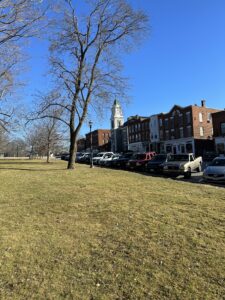
Located within a National Register Historic District along East and West Street.
Litchfield is famous as one of the most beautiful residential communities in America and is considered to be New England’s finest surviving example of a typical late 18th century New England town. Situated in the midst of the Litchfield Hills at an elevation of approximately 1,100 feet above sea level, the village is a show place of elegant white colonial and 19th century private homes overlooking broad green lawns, which border its residential streets. In 1959, the Borough of Litchfield was designated a Historic District by the Connecticut General Assembly. Ten years later, part of the District was made a National Historic Landmark.
Litchfield Historic District
Route 63, Litchfield
Located on Mount Tom is a 34-foot stone tower. A hike up to the top of the Mount Tom Tower yields a 360-degree view of the surrounding area and distant landmarks. The original structure was made of wood and in 1921 was rebuilt using stone.
Mount Tom
Route 202, Litchfield
860-424-4070
Committed to preserving the artifacts and archives of the town, as well as the country’s first law school.
Litchfield Historical Society
7 South St., Litchfield
860-567-4501
Instagram: @litchfieldhistory
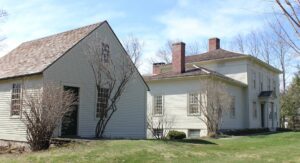
The first law school in the country takes visitors through role-playing, hands-on areas, and interpretive exhibits—each visitor explores timeless issues of travel, communication, education, and community.
The Tapping Reeve House
7 South St., Litchfield
860-567-4501
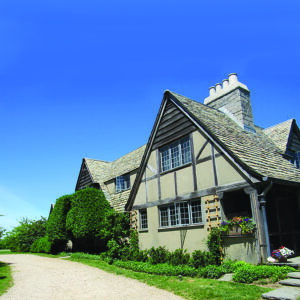
Nestled in the Litchfield Hills, Topsmead State Forest remains a precious piece of a past era with fine craftsmanship and understated wealth evident throughout the former summer estate of Miss Edith Morton Chase.
Topsmead State Forest
25 & 45 Chase Rd., Litchfield
Built in 1888 with an overall length of 188 feet, Boardman’s Bridge is the longest of only three lenticular through trusses remaining in the state (as of August 2001). It is also notable for its ornamental detail: floral-motif cresting atop the portals, winged orb finials, and builders plates listing the names of the New Milford selectmen at the time of its construction. The bridge is now bypassed by a modern structure but remains open for pedestrian use. It was one of the first Berlin bridges to be listed on the National Register (May 13, 1976).
Boardman’s Bridge
Boardman Rd. at Housatonic River, NW of New Milford
Lovers Leap Bridge is the one of only three lenticular through trusses remaining in the state (as of August 2001). Located in a scenic setting high above a deep wooded gorge, it is notable for its large size, highly originalcondition, and wealth of ornamental detail: fleur-de-lis cresting atop the portals, orb finials, railings with cast-iron rosettes, and builders plates listing the names of the New Milford selectmen at the time of its construction. The bridge is now bypassed by a modern structure and is closed even for pedestrian access. It was one of the first Berlin bridges to be listed on the National Register (May 13, 1976). According to local legend, this was the spot where a young Native American girl, distraught over love, threw herself into the rushing water below.
Lovers Leap
Grove St., New Milford
203-312-5023
Also known as Mosley House-Farm, this colonial mansion, constructed in 1763, was renovated in the 1920s. Up until 1939, the property was used as a farm and known as Blackberry River Farm, after which it was transformed into an Inn. In 1971 the Inn was sold to a local corporation, which modernized the property. In 1993, an investor from New York bought the Inn. Today Blackberry River Inn is operated as a bed and breakfast.
Blackberry River Inn
538 Greenwoods Rd. (Route 44 West), Norfolk
860-542-5100
The Haystack Mountain Tower is a 34-foot high stone tower at the summit of Haystack Mountain. Erick Kennsett Rossiter and Rossiter & Muller designed the tower, built in 1929. It cost approximately $50,000 and was made from stone cut from the mountain. The tower allows visitors to see Long Island Sound, the Berkshires, and peaks in Massachusetts, New York, and the Green Mountains of Vermont.
Haystack Mountain Tower
Route 272, Norfolk
860-482-1817
Designed by Alfredo S.G. Taylor, the monument honors Norfolk’s World War I veterans and heroes. Dedicated on Armistice Day in 1921, the monument features three archways rising from a triangular base with long benches. A replica of the Liberty Bell hangs in the niche below the intersection of the archways. The monument is topped with a stone design that appears to resemble an eternal flame.
Intersection of North St (Route 272) & Greenwoods Rd. (Route 44), Norfolk
This landmark is a quirky, off-the-beaten-path kind of place that traces the history of locks and lockmaking in America. The Museum houses an extensive lock collection that includes a cannon ball safe, 30 early era time locks, safe escutcheon plates, a large number of British safe locks, door locks, padlocks, handcuffs and keys, and more. Located in Terryville, the museum is directly across from the original site of the Eagle Lock Company, founded in 1854. Major collections are displayed by company or theme. The Eagle Lock Room contains over 1,000 locks and keys manufactured from 1854 to 1954. The Bank Lock Room comprises a selection of bank locks, vault locks, safe locks and time locks. The Corbin-Russwin Room contains a large display of ornate hardware. Several pieces are gold plated and enameled. One of the animated displays shows how a pin tumbler lock works. A large display of mounted door knobs and escutcheons made by Russwin and P & F Corbin during the Victorian era are extensively detailed in styles such as Roman, Greek, French and Italian Renaissance, Gothic, Flemish, and Elizabethan English. The Yale Room accommodates locks manufactured by the company from 1860 to 1950. One of the attractions here is the original patent model of the Mortise Cylinder Pin Tumbler Lock designed by Linus Yale Jr., in 1865. While this device is considered the greatest invention in the history of lockmaking, it is certainly not without historical precedence. Close by is a 4,000 year old Egyptian made pin tumbler lock. There is a large display of locks and hardware made by Sargent and Co. in New Haven, Ct. Several early exit devices and door closers are on display as well. The Antique Lock Room contains a large display of colonial locks and Ornate European locks dating back to the 1500’s.
Lock Museum of America
230 Main St (Route 6)
860-480-4408
This is where 38 soldiers from the Revolutionary War are buried. There are gravestones dating back to 1749.
Overlooking the Farmington River and only minutes from the Peoples State Forest, the Old Riverton Inn was opened in 1796 by Jess Ives. Originally known as Ives Tavern or Ives Hotel, the Inn provided a resting place for stagecoach drivers and their passengers along the route between Hartford and Albany.
Old Riverton Inn
436 East River Rd, Riverton
860-379-8678
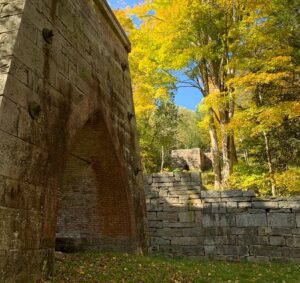
Originally serving as a 19th century Iron making complex, Mine Hill Preserve is now maintained by the Roxbury Land Trust and includes 360 acres of hiking trails, a restored blast furnace, roasting ovens, granite quarries, abandoned mine shafts, and a stone bridge.
Mine Hill Preserve
32 Mine Hill Rd, Roxbury
860-350-4148
The Gay-Hoyt House, built in 1775, is considered a typical example of a Yankee village home of the better kind, built of brick rather than wood, with its central hall, end chimneys, conventional fenestration and room plan. The use of brick in Connecticut was never very common. The front and south walls are laid in Flemish bond, and the north and rear are so-called American. So strong was the Yankee tradition that instead of running the end walls above the gable end, as in Dutch houses, the overhanging sloping gable was preferred. The fine points are the interesting treatment of the window heads, the simple light over the front door with a slight arching of the brickwork above. The stringcourse was added to break the monotony of the wall surface and to mark the stories. The front porch is an addition, built a few years later than the house.
18 Main St, Sharon
860-364-5688
This landmark is a quirky, off-the-beaten-path kind of place that traces the history of locks and lockmaking in America. The Museum houses an extensive lock collection that includes a cannon ball safe, 30 early era time locks, safe escutcheon plates, a large number of British safe locks, door locks, padlocks, handcuffs and keys, and more. Located in Terryville, the museum is directly across from the original site of the Eagle Lock Company, founded in 1854. Major collections are displayed by company or theme. The Eagle Lock Room contains over 1,000 locks and keys manufactured from 1854 to 1954. The Bank Lock Room comprises a selection of bank locks, vault locks, safe locks and time locks. The Corbin-Russwin Room contains a large display of ornate hardware. Several pieces are gold plated and enameled. One of the animated displays shows how a pin tumbler lock works. A large display of mounted door knobs and escutcheons made by Russwin and P & F Corbin during the Victorian era are extensively detailed in styles such as Roman, Greek, French and Italian Renaissance, Gothic, Flemish, and Elizabethan English. The Yale Room accommodates locks manufactured by the company from 1860 to 1950. One of the attractions here is the original patent model of the Mortise Cylinder Pin Tumbler Lock designed by Linus Yale Jr., in 1865. While this device is considered the greatest invention in the history of lockmaking, it is certainly not without historical precedence. Close by is a 4,000 year old Egyptian made pin tumbler lock. There is a large display of locks and hardware made by Sargent and Co. in New Haven, Ct. Several early exit devices and door closers are on display as well. The Antique Lock Room contains a large display of colonial locks and Ornate European locks dating back to the 1500’s.
Lock Museum of America
230 Main St (Route 6)
860-480-4408
The Thomaston Opera House was built in 1884 and serves as a cultural and recreational center for the town and surrounding communities. The Landmark Community Theatre is a local arts organization and is committed to managing the Thomaston Opera House and producing a high level of theatrical productions.
Thomaston Opera House
158 Main St
860-283-8558
Built by the Hotchkiss Brothers Company in 1900, this queen Anne-style Victorian house features elaborate woodwork, stenciled walls, original furnishings and a decorative art collection. The museum highlights local history and the carriage house features a working machine shop. Upon completion of the home in 1900, the Fylers and Hotchkisses quickly settled in. The residence remained in the family until the last occupant, Gertrude Fyler Hotchkiss, died in 1956. In her will, Mrs. Hotchkiss bequeathed her estate to the Torrington Historical Society. This extraordinary gift included the Hotchkiss-Fyler House Museum and grounds, the adjacent house (now the history museum), and the Carriage House.
Hotchkiss Fyler House Museum
192 Main St, Torrington
860-482-8260
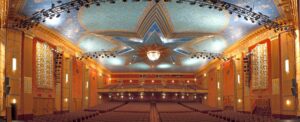
The iconic theater presents dance performances by The Nutmeg Ballet Conservatory, movie showings, stage company performances, and special events.
Warner Theatre
68 Main St, Torrington
860-489-7180
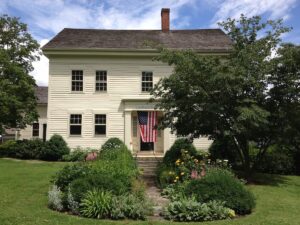
Dedicated to the mission to collect, preserve, and share the objects and stories which illuminate the history of Washington, Connecticut.
Gunn Historical Museum
5 Wykeham Rd, Washington
860-868-7756
Gideon Hollister, a leading early resident of Washington, built this house about 1765 for his son Preston. In addition to farming, the enterprising Gideon operated a sawmill, a trading post, and a potash works; he also held civic and military posts. Succeeding generations of Hollisters occupied the house until the middle of the 20th century and continued to be important in Washington. Open fields, barns and other outbuildings on the property bear witness to the homesteads ongoing use as a farm. In the latter part of the 20th century, the house became, like many other Litchfield County farmsteads, a weekend home.
Because Washington was still remote in the mid-18th century, the house’s architecture is simple. Its saltbox form is uncommon in the region (only three exist today in Washington), and the finishes are plain. Later additions maintained this overall simplicity. Although it is not old enough to contribute to the homestead’s historic significance, the garden is noteworthy. The gardens were begun in 1979 by George Schoellkopf and planned to compliment the old house and the surrounding landscape. The garden unfolds in a successive series of “rooms” bordered by walls and hedges which create an architectural framework for the romantic abundance of the plantings. The garden is open to the public late April to mid-October.
300 Nettleton Hollow Road, Washington
860-868-2200
hollisterhousegarden.org
Instagram: @hollisterhousegarden
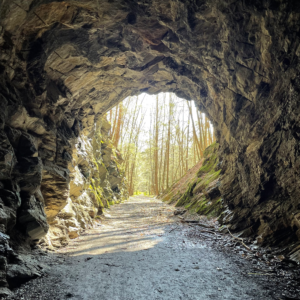
Spreading around 1,000 acres, Steep Rock is the association’s largest preserve. Take in the flora and fauna along the flat trail that runs alongside the river’s edge, or venture through the old hemlock forests to the summits peak.
There is 3 main points of interest to checkout while exploring, Railroad Tunnel, Holiday House, and Steep Rock Summit.
Steep Rock Association
2 Tunnel Road, Washington Depot
860-868-9131
Instagram: @steeprockassociation
Completed in 1890, Soldiers’ Monument was erected as a memorial to the men of the surrounding communities who served in the Civil War. The monument is on a crest of Camp Hill on Crown Street overlooking Winsted’s downtown Main Street. During World War II, the monument served as a watchtower for aerial activity to provide early warning protection for our state and nation. Today, the Monument and Memorial grounds continue to serve as a reminder of the sacrifices made by all citizens for freedom and provide a location for reflection and rest.
Crown St, Winsted
Founded in 1882, the Winsted Hosiery Company was a small manufacturer of men’s hosiery. By 1936 it had grown to become the largest hosiery manufacturer in Connecticut. The company’s red-brick industrial complex exemplifies the Italianate and Renaissance Revival design influences on manufacturing facilities around the turn of the century. Most of the mill buildings in the Winsted Hosiery complex retain a high degree of architectural integrity.
Winsted Hosiery Mill
101 Whiting St, Winsted
888-831-2107
Set in historic Woodbury’s village center, the Glebe House Museum offers the visitor a glimpse of Revolutionary War era Connecticut. The simple but elegant 18th century farmhouse is furnished as the home of the Reverend John Marshall, who lived in here during the American war for Independence. In 1926, famed English horticultural designer and writer, Gertrude Jekyll was commissioned to plan an “old fashioned” garden to enhance the newly created museum. The Glebe House garden includes 600 feet of classic English style mixed border and foundation plantings, a planted stone terrace, and an intimate rose allée.
49 Hollow Road, Woodbury
203-263-2855
glebehousemuseum.org
Hogpen Hill Farms is a 243-acre tree farm and landscape sculpture park in Woodbury with over 100 Edward Tufte artworks. Drive-ins are welcome when the art park is open and admission fee is $80 per car.
Hogpen Hill Farms
100 Weekeepeemee Rd
The Jabez Bacon House is an architecturally significant three-story Georgian house built circa 1760 for the man reputed to be Connecticut’s first millionaire. Acknowledged as one of the finest 18th century houses in Connecticut, the Jabez Bacon house combines an extraordinary level of fine workmanship with well-preserved and uniquely beautiful features in superb original condition. Jabez Bacon was a self-made merchant who bought the property in Woodbury in 1758 at the age of 28. He was a partner in the Derby Fishing Company, which owned ships and traded along the eastern seaboard. Bacon had a store, now a private home next door, and was said to have sold supplies to the yankee peddlers for all of western Connecticut and into New York and Massachusetts.
Jabez Bacon House
30 Hollow Rd, Woodbury